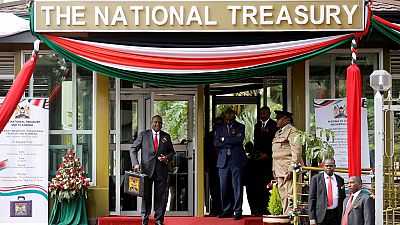Tanzania
Tanzania’s finance ministry proposed new taxes on locally manufactured and imported wigs and hair extensions which are popular with women in the country.
Phillipo Mpango, who was tabling the 2019-2020 budget in parliament was applauded by legislators when he made the proposals that are likely to be unpopular with ordinary Tanzanians.
When the budget is approved, locally manufactured wigs will pay a 10% tax, while imported ones will attract a 25% tax.
East African finance ministers including from Uganda, Rwanda, Kenya and Tanzania presented their budgets for the next financial year on Thursday.
More from Tanzania’s budget
Mpango said Tanzania’s overall spending will rise 2% to 33.11 trillion shillings ($14.43 billion) in 2019/2020, while borrowing 4.96 trillion shillings from the domestic market.
The government also plans to borrow 2.32 trillion shillings from external non-concessional sources, Mpango said.
East Africa’s third-largest economy is investing heavily in public infrastructure projects as it seeks to profit from its long coastline and upgrade its rickety railways and roads to serve the growing economies in east and central Africa.
Rwanda’s budget
Rwanda’s overall spending will rise 11% in 2019/20 (July-June) fiscal year to 2.877 trillion Rwandan francs ($3.16 billion), while 2019 economic growth will be slower than a year earlier, its finance minister said on Thursday.
Uzziel Ndagijimana proposed that 85.8% of the budget would come from internal sources, and the rest from external grants. The economy is projected to grow 7.8% in 2019 from 8.6% in 2018, he said.
Uganda’s ambitious financial plan
Uganda plans to raise its spending by 23% in 2019/20 (July-June) to 40.1 trillion shillings, and its fiscal deficit will rise, its finance minister said on Thursday in his budget speech.
Matia Kasaija said in parliament the 2019/2020 fiscal deficit will be 8.7% of GDP, up from 5.8% in this fiscal year, which ends this month.
He said the government will borrow 2.8 trillion shillings from domestic markets in 2019/20 up from 2.2 trillion shillings in 2018/19. External financing will be 10.11 trillion shillings, but he did not say how much of this will be borrowed.
Highlights of Kenya’s budget
Kenya will cut its budget deficit for its 2019/20 (July-June) financial year to 5.6 percent of GDP from 7.4 percent in the fiscal year to the end of this month, the Finance Minister Henry Rotich said in his budget proposals to parliament.
The funding gap will be filled by net local borrowing of 283.5 billion shillings ($2.79 billion) and 324 billion shillings in net external borrowing, Rotich said.













11:05
Africa's hight cost of climate change [Business Africa]
01:16
Kenya investigates alleged abduction in Nairobi of Uganda opposition figure
01:36
Kizza Besigye faces Military Court as Uganda-Kenya jurisdiction row deepens
01:16
Ugandan opposition politician kidnapped and jailed, his wife says
11:05
New era of sovereignty in Mali's gold sector [Business Africa]
Go to video
Ugandans detained for insulting President Museveni and family on TikTok